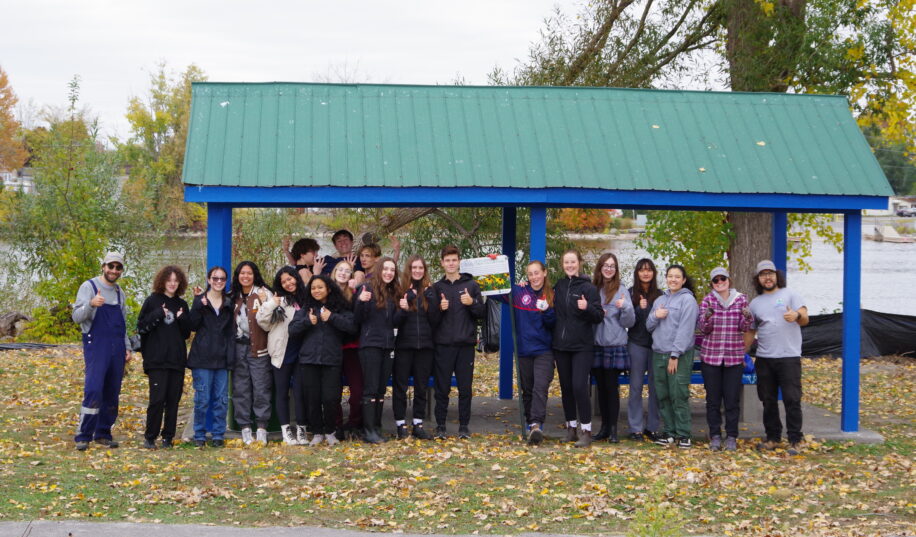
Planting and Growing Together at the Greenbelt
Submitted by: Brooke Wright, Environmental Stewardship Technician Assistant
This fall, the Restoring the Trenton Greenbelt Project received significant volunteer input from dedicated community members and various local students. In October alone, we had 7 classes from Trenton High School and St. Paul Catholic Secondary School contribute to planting a piece of the Greenbelt Conservation Area. That was over 130 students! Lower Trenton Conservation also hosted a general public planting day where 10 volunteers came out. The cloudy skies and rainy afternoon didn’t stop this group from getting the job done planting over 380 trees and shrubs. These experiences bring together people from across the watershed over a common task and facilitate hopeful conversations amongst volunteers. The passion teeming from both staff and volunteers alike made for a productive and interactive day. Being a part of something that is working towards creating direct change is an immeasurable feeling. Not only does it help our organization reach desired goals, but it also provides a sense of community. Being around like-minded people who embrace the importance of conservation projects unites us together.
With all our efforts combined, we were able to plant over 4800 grass and wildflower plugs. That number more than doubled the number of plants we had originally hoped for. It was amazing to witness this hard work with so many dedicated individuals to make these plantings possible. Stewardship is one of the many ways we as an organization can accomplish projects such as the Restoring the Greenbelt Project. Creating these experiences to both encourage and educate people through the community is key. In reaching our goal of creating a naturally biodiverse environment, we selectively choose plants that are native to the area and that would be beneficial to humans and the natural world alike. This Fall, the plantings focused on big bluestem, wild strawberry, side oats grama, and wild bergamot. These species will aid in providing food and habitat for pollinators, birds, and other wildlife.
With climate change continuing to impact our daily lives, volunteering can bring a sense of accountability to ensure our efforts match these changes. If you are someone who is looking to learn more about your local watershed or have any interest in learning about how you can help the environment, we would love to meet you. Connecting the community to nature is a key part of this project, and we want your help. We hope to get everyone involved, we can’t do it without you!
If this is an interest please visit our volunteer page to register. Although winter is coming, be sure to keep your eyes open when spring is upon us to view all the hard work that has gone into making this project come to life.
Thank you to all the volunteers who made this possible.
Funding for this project was provided by the Ontario Ministry of the Environment, Conservation and Parks (MECP), and the Nature Smart Climate Solutions Fund (a Government of Canada’s Department of Environment and Climate Change program in partnership with Conservation Ontario).

